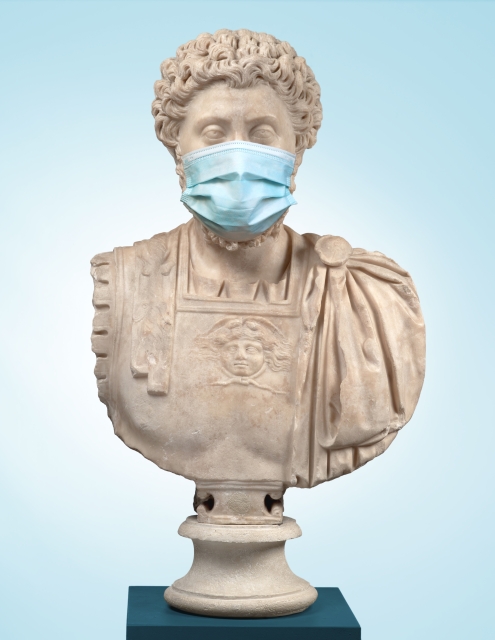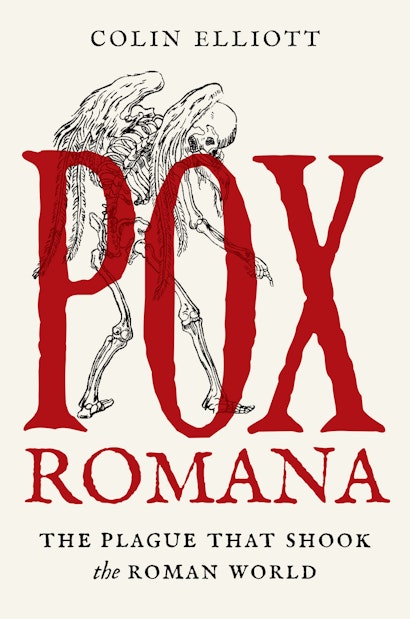Elites of the Pax Romana—the Roman Empire’s political and economic apex—had little reason to fear for the future of their world order. Rome of the mid-second century AD was a cosmopolis of over 1,000,000 souls, and capital of consumption. Spices and silks from the distant east sold in Rome’s fora alongside ambers from the North Sea coast and African ivories. And Rome’s economic power mirrored its military might. Several hundred thousand Roman soldiers sprawled across borderlands between the Atlantic to the Red Sea, and from the thick forests of Germany to the sparse Sahara sands. While only a sliver of the population directly benefitted from this interconnected world, the Pax Romana was, nevertheless, an efflorescent epoch in the histories of European, North African and Western Asian peoples.
The end of this era, therefore, came as a shock to those who witnessed the Pax Romana’s sudden ruination. Modern historians are equally perplexed. Rome’s golden age still hummed along when Marcus Aurelius became emperor in AD 161. Yet within a generation, Rome’s fortunes lurched towards a new trajectory: a century-long age of violence, civil wars, financial crisis and religious persecutions. What exogenous shock knocked the Empire from its prosperous and peaceful pinnacle?
In recent years, historians have zeroed in on an infectious outbreak known as the Antonine plague—an apparent pox-like disease that ravaged not just Rome, but several Roman cities during Marcus’ reign. Even sources from the other side of the Eurasian landmass—chronicles of the mighty Han Empire in China—speak of surging mysterious epidemics. Our evidence, however, for these biological events is disappointingly, thin. But their temporal coincidence with the Antonine plague suggests at least some, and perhaps many of these outbreaks, may be attributable to the same disease; in which case, the world’s first pandemic occurred several hundred years earlier than previously thought.
The Roman sources for the Antonine plague are also fragmentary and opaque. But all told, a constellation of ancient accounts—including the notes of the famous Greek physician Galen—strongly suggest a disease of unprecedented reach and virulence scourged the Roman Empire for at least a full decade. Additional evidence, circumstantial though it may be, implies broader social and economic fallout coinciding with the Antonine plague: urban depopulation, pauses in economic production and general disorder in parts of the Empire. We don’t know what the disease was: retrospective diagnosis and genetic evidence remain elusive.
We cannot dismiss the Antonine plague as a significant contributor to whatever went wrong in the final decades of the Pax Romana. No doubt as many as a million or more died over the pandemic’s decade-long sweep through Roman cities and soldier-camps. Disease victims augmented the already high routine mortality of Rome’s pre-industrial context—causing a serious disruption. But new research reveals plenty of serious stresses already baked into Rome’s imperial machinery—some of them preceding the Antonine plague by more than a decade. In other words, a crisis was already lurking under the surface of Pax Romana’s shimmering veneer. The pandemic exposed and then exacerbated these fractures; the Antonine plague was as much a catalyst as it was a catastrophe.
The imperial systems that produced, extracted and distributed food offer a telling example of how epidemics intermingled with pre-existing stresses to foment crisis. While the forces of supply and demand operated in the Roman Empire in many sectors of their economy, much of the grain that fed cities and soldiers featured many of the hallmarks of central planning: inflexible, highly-controlled and coerced processes, with corresponding results that fell well short of their grand designs and powerful propaganda. State influence—through mandates and subsidies, but also direct control—distorted prices, disincentivized production, slowed-down distribution and left the food supply system vulnerable to the vagaries of nature. The burden of feeding Rome, for instance, fell heavily on provinces like Egypt. The arrangement worked out reasonably well when Egyptian harvests were abundant, as they were through much of the Pax. But about a decade and a half prior to the Antonine plague, local climate changes increased droughts. Storehouses emptied. And, eventually, Egypt’s fortunes faltered. Markets were simply not well-developed enough to pick up the slack.
Rome’s sluggish state could not cope with the sudden food shortages. Segments of the dependent populations, namely soldiers and urbanites—many of the same that would later suffer disproportionately under the Antonine plague—likely faced malnutrition. These individuals may not have starved, but they undoubtedly dealt with diminishing levels of the macro and micronutrients that aid human resistance to foreign pathogens. At the regional level, food insecurity spurred internal migrations. Disruptions in local food supplies forced peasant families to leave or even sell their lands, pushing hundreds of thousands of distressed migrants into cities. These refugees would have both stretched existing urban food stores, but also changed the immunity profile of urban populations—saturating cities with bodies biologically naïve to each city’s unique cocktail of diseases and parasites. The Roman Empire’s unsanitary cities were viral and bacterial jungles—pulsing with some of the nastiest pathogens of the past few millennia. The unfortunate arrival of a novel pandemic during the Antonine plague, therefore, could not have been timed any worse.
Even the Empire’s sources of strength and prosperity conspired against the ill-fated Pax Romana. Trade routes, once arteries of commerce, became conduits for contagion. Merchants, laden with silks and spices, unwittingly carried invisible passengers into and around Roman territory. And beyond trade, the Roman military crisscrossed the empire just prior to the pandemic—fighting a protracted war in Persia, and besieging cities our sources claim were rife with disease. These same soldiers were then summoned to waylay an emergent invasion on the German front. As they crossed the Empire by both land and sea, mingling with local populations, the soldiers acted as a mobile Petri dish, leaking samples across Syria, Asia Minor, Greece and Italy. Thus, when the Antonine Plague finally penetrated the Empire’s porous borders, it found a perfect storm waiting: migrants, merchants and soldiers to carry it from city to city; and cities that were themselves densely populated by malnourished and biologically naive populations.
The story of the Antonine plague is therefore not only a gripping medical mystery, but rich and fascinating tale of the transformation of one of history’s great empires. The pre-existing conditions that incubated and unleashed a truly terrifying pestilential scourge—many of which were hidden from the Romans themselves—are now visible to modern historians. That first pandemic, like the most recent one, was not an independent agent of change. The resilience and flexibility of human institutions—both before, during and following the Antonine plague—mattered then, just as they matter now. Diseases dance differently with their human hosts depending on everything from the health of individual bodies to the robustness of economic, social and political systems. In the case of the Antonine plague, the Roman Empire’s unique historical context influenced the pandemic’s severity as much as the pandemic changed the trajectory of Roman history.
Colin Elliott is associate professor of history at Indiana University and the author of Economic Theory and the Roman Monetary Economy.

